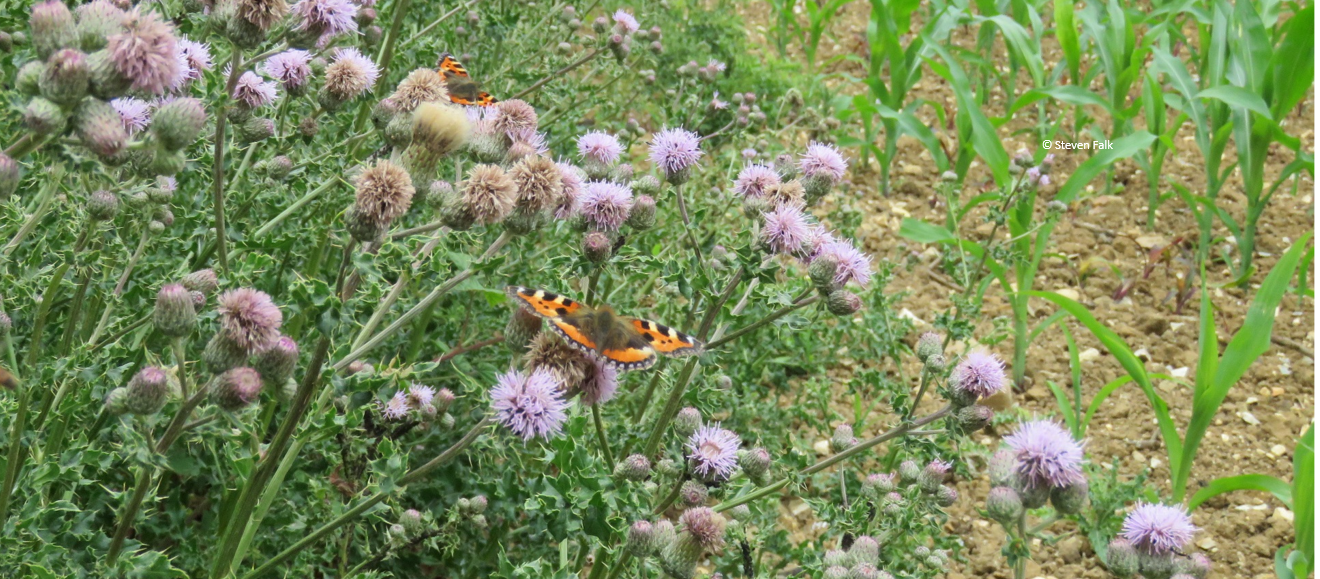Agri-environment schemes (AES) are the most significant mechanism to deliver environmental policy in many countries. Previous studies of AES have found mixed evidence for effects on biodiversity, and have largely focused on responses of wildlife taxa within individual AES options or agreements. For mobile species, there is a need to demonstrate that AES benefits extend beyond changes to localised abundance, which could be due to short-term redistribution of individuals in response to increased resources supplied by AES management.
Scientific challenge
Project overview
We have monitored the responses of mobile species to AES at local and landscape scales, specifically considering impacts beyond farm or agreement boundaries, multi-year baseline survey. Together with partners at British Trust for Ornithology (BTO), we surveyed pollinating invertebrates (bees and hoverflies), butterflies, moths, birds and bats, within 1km survey squares that contrast in the amount of AES management at two spatial scales. Surveys ran over four years to collect a baseline dataset, with the longer term goal of resurveying the same sites. This will enable us to understand how mobile taxa differ in the scale at which they respond to AES, and whether increases in the numbers of key species groups are sustained over time in terms of population growth (or reduced rates of decrease).
The baseline survey report from this project has now been released and is available here.

Method
AES gradient design
Evidence-based AES gradients were constructed at landscape and local spatial scales. The generalised AES intervention gradients integrate multiple management options demonstrated to benefit the target taxa. This has enabled a versatile design to be applied across several agricultural land use types including arable farming, livestock farming, and in both lowland and upland contexts. Within each sampling region, the AES intervention gradients are broadly independent of background habitat variables, allowing a robust test of AES management. Survey squares are grouped in six sampling regions (National Character Areas), with 54 1km squares surveyed each year.
Species monitoring
Mobile species are monitored with intensive surveys repeated several times a year within each survey square. Survey methods include standardised transect recording (butterflies, bumblebees, birds), pan traps (pollinating invertebrates), light traps (moths) and acoustic monitoring (bats). Where possible survey methods are broadly equivalent to national monitoring schemes, such as Wider Countryside Butterfly Survey (WCBS), National Pollinator Monitoring Scheme (PoMS) and Breeding Bird Survey (BBS).
Detailed plant species data were collected in several contexts. Flowering plants were recorded in conjunction with transect, pan and light trap surveys to characterise the resources available for pollinating invertebrates. Botanical data also formed the basis of AES management option implementation surveys. Broad habitats and AES options were mapped.
Partnership with landowners:
This project is only possible through the voluntary access permissions granted by landowners. Over 160 farmers and other landowners have granted UK CEH and BTO access for baseline surveys. Many thanks for their ongoing participation in the project.
Enquiries:
Please contact AESspeciesmonitoring@ceh.ac.uk for further information.
Principal Investigator
- Senior Ecologist (NERC band 5), Biodiversity science area, CEH Wallingford, 2015 - present
- Applied Community Ecologist, CEH Wallingford, 2010 – 2015
- Postdoctoral Research Associate, Imperial College London, 2006 – 2009
- Scientific Officer, Forest Research, 1999 – 2002

